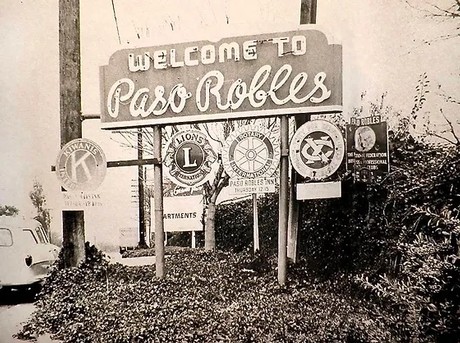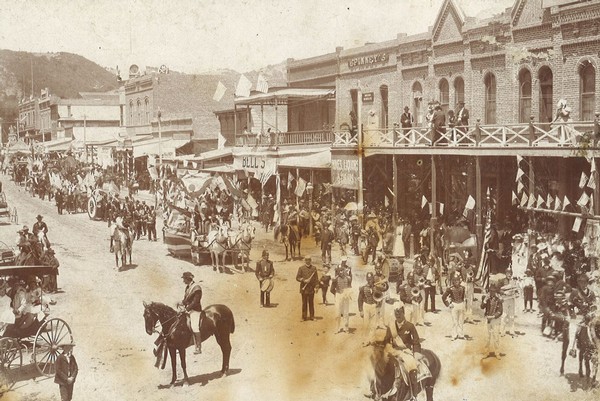A History of Winemaking in Paso Robles

The history of winemaking in Paso Robles spans over two centuries, dating back to the 18th Century. The climate of warm days and cool nights, alongside a great diversity of soil types has led to the thriving wine community that exists there today, and one that we are super stoked to join!
Winemaking in Paso Robles traces its roots back to Spanish missionaries who were establishing their missions along the California Coastline. These missionaries, including those at nearby San Miguel Arcángel, planted vineyards to produce sacramental wines for religious ceremonies.
In the mid-19th century, settlers from Europe, particularly Italy and France, began arriving in Paso Robles. Much of this was due to the famous Gold Rush taking place in California at the time. Recognizing the area's potential for grape growing, they planted vineyards and established small wineries. However, winemaking in Paso Robles remained relatively modest compared to other regions in California at this time.
There's some dispute over which wineries were the first to establish themselves in Paso Robles. According to some, it was Andrew York a rancher from Indiana, who planted a Zinfandel vineyard in the late 1870s. Within a few years, he found that the vines were yielding more than he could market. Due to this issue, he established Ascension Winery, which operated until 2001.
Shortly after York’s early success, immigrant farming families settled in the area. Ernst family arrived from Geneseo, Illinois in 1884 and over the next 20 years planted 25 varieties of wine grapes, and their wines began to receive great acclaim. In 1886, Gerd Klintworth planted a vineyard in area and produced the first white wine in the region. The Frenchman Adolph Siot also put in Zinfandel grapes in an area west of present-day Templeton sometime around the mid-1850s. The vineyard was sold to the Rotta family in 1908 and is still there today!
Polish Statesman, Ignace Paderewski, planted Petite Sirah and Zinfandel in the Adelaida District some time around 1914. In 1933 Paderewski’s wine was made at the York Mountain Winery and these went on to become award-winners, expanding the recognition for Paso Robles as a premier wine destination. Around the same time, Italian families, Dusi, Martinelli, Vosti, and Bianchi began making wine that is still being farmed today by the third and fourth generations of the families.

Like many wine regions, Paso Robles faced challenges, including diseases like phylloxera and the economic downturns of the late 19th and early 20th centuries. Prohibition dealt a significant blow to the wine industry nationwide during 1920 to 1933, forcing many vineyards in Paso Robles to be converted to walnut, almond, or olive oil production. Some wineries managed to stay afloat during the time by producing wine for medicinal or sacramental purposes.
Following the repeal of Prohibition in 1933, Paso Robles, like other wine regions, began to recover. However, it wasn't until the late 1960s and early 1970s that a new era of winemaking dawned in the region. Dr. Stanley Hoffman, with guidance from U.C. Davis and enologist Andre Tchelistcheff, planted some of the region’s first Cabernet Sauvignon, Pinot Noir, and Chardonnay. He did so on his 1,200-acre ranch, located next to the old Paderewski Ranch in the hills of Adelaida, about five miles west of town. Visionary pioneers, inspired by the potential of Paso Robles' terroir, started planting vineyards and founding wineries, laying the groundwork for the modern wine industry in the area. The Hoffman Mountain Ranch Winery was the first large-scale winery in the region
Paso Robles gained official recognition as an American Viticultural Area (AVA) in 1983, acknowledging its distinct terroir and the quality of wines produced in the region. This designation helped elevate Paso Robles' status within the global wine community and attracted investment and talent to the area. Over the following decades, the number of wineries and vineyards in Paso Robles grew exponentially, with an increasing focus on producing premium wines.

One of the defining characteristics of Paso Robles' wine scene is its diversity. The region boasts a wide range of microclimates, soil types, and elevations, allowing for the successful cultivation of numerous grape varieties. Winemakers in Paso Robles have embraced this diversity, experimenting with both traditional and non-traditional grape varieties and winemaking techniques, resulting in an exciting array of wines that showcase the region's versatility and innovation.
In recent years, sustainability has become an increasingly important focus for Paso Robles wineries. Many producers are implementing environmentally friendly practices in the vineyard and winery, such as organic farming, water conservation, and renewable energy use, in an effort to preserve the region's natural resources for future generations. Additionally, the Paso Robles wine community is known for its spirit of collaboration and camaraderie, with winemakers frequently coming together to share knowledge, resources, and support one another.